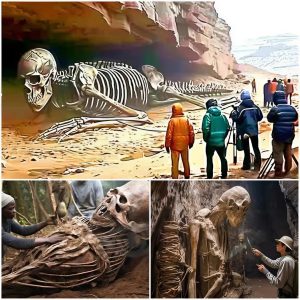The recent revelation of the continued existence of descendants of the Olmec people has sent shockwaves across the global archaeological and historical communities, sparking widespread surprise and fascination. The Olmec civilization, often regarded as one of the earliest major Mesoamerican cultures, flourished in what is now southern Mexico from approximately 1500 BCE to 400 BCE. Known for their monumental stone heads, intricate art, and significant influence on subsequent civilizations like the Maya and Aztecs, the Olmecs have long captured the imagination of historians and archaeologists.
The discovery that descendants of the Olmec people still exist today challenges conventional historical narratives and raises profound questions about continuity, cultural resilience, and the enduring legacy of ancient civilizations. Archaeological findings and genetic studies have begun to shed light on the survival and adaptation of Olmec descendants over millennia, offering tantalizing glimpses into their cultural practices, traditions, and genetic heritage.

Historically, the Olmec civilization thrived in the humid lowlands of Mexico’s Gulf Coast, where they established impressive ceremonial centers and engaged in extensive trade networks. Their artistic achievements, including colossal stone sculptures and intricate jade artifacts, attest to their sophisticated society and spiritual beliefs. The discovery of Olmec descendants today suggests that aspects of their cultural heritage may have persisted through centuries of societal change and external influences.
For researchers and scholars, uncovering the existence of modern Olmec descendants presents a unique opportunity to explore the continuity of indigenous cultures and the interplay between ancient traditions and contemporary identities. It invites a reexamination of historical narratives that have often overlooked or marginalized indigenous perspectives and contributions to the rich tapestry of human history.

The implications of this discovery extend beyond academic circles, resonating with indigenous communities in Mexico and beyond. For many descendants of the Olmec people, the recognition of their heritage provides a sense of pride, cultural affirmation, and connection to their ancestral roots. It offers an opportunity to reclaim and celebrate traditions that have endured despite centuries of societal change and external pressures.
In the wake of this groundbreaking revelation, efforts are underway to further study and document the cultural practices, languages, and oral histories of modern Olmec descendants. Collaborations between archaeologists, geneticists, linguists, and indigenous communities are crucial in fostering mutual understanding and preserving cultural heritage for future generations.

While much remains to be uncovered about the contemporary lives and cultural contributions of Olmec descendants, the discovery underscores the resilience and vitality of indigenous peoples worldwide. It serves as a poignant reminder of the importance of respecting and honoring diverse cultural legacies that enrich our understanding of humanity’s shared past and present.

As research into the descendants of the Olmec people continues to unfold, one thing is certain: their story is a testament to the enduring spirit of ancient civilizations and their enduring impact on the world today. The revelation of their existence serves as a bridge between past and present, inviting us to explore, appreciate, and learn from the legacy of the Olmec civilization and its living descendants.





